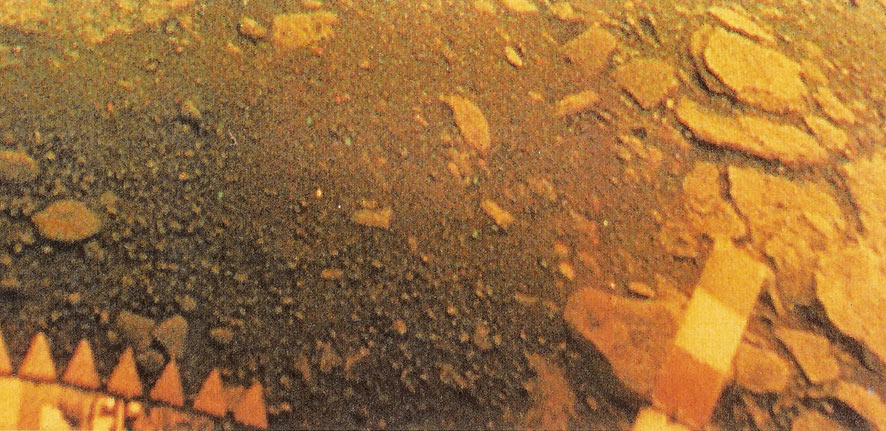
Venus: Mysteries of the Evening Star
May 2018 :
Once again, we’re able to look up westward right after sunset and enjoy one of the more beautiful, yet very unique, objects in our solar system. The planet Venus, which for many years was considered Earth’s twin, has proven to be anything but. Also, named for the Roman goddess of love and beauty, it has proven to be anything but. Our neighboring planet is a totally alien object, racked with an unbreathable, crushing, and opaque atmosphere. But, then, how do we know anything about it at all?
The first attempt to learn about Venus’s surface took place in 1967, when the Arecibo radio telescope, a carved-out valley in Puerto Rico, at the time the largest in the world at 1,000 feet, bounced radar beams onto the planet. This process introduced us to two totally different features of Venus’s rotation: It was very slow – at about 243 of our days, slower even than its approximately 225-day revolution around the Sun, making Venus the slowest rotating planet; also, it was rotating backwards, or clockwise as seen from above the ecliptic plane. Venus was almost standing straight up, only off by about 3 degrees, but its rotation was west to east, totally opposite the Earth and most of the rest of our solar system bodies.
Then, of course, came the determination of its atmosphere. No longer were we able to believe in human habitation, unless we could learn to breath almost perfect carbon dioxide. And, with this, the realization of the runaway greenhouse effect, giving Venus a permanent temperature overage, close to 900 degrees Fahrenheit. Things were looking worse. Finally, came the attempted exploration of the surface by several Soviet landers, learning very quickly that the atmosphere’s pressure was 90 times ours here on Earth, enough to flatten anybody into an immediate pancake.
But, despite all this, Soviet landers and American orbiters (again using radar) have given us fascinating glimpses into the surface of Venus, really confirming how far away from this planet we should be keeping; but, still, when you venture outside in the early evening, enjoy the beauty of this apparent example of Hades, and wonder at the diverse nature of our neighbors in space.
The surface of Venus as imaged by Venera-13



